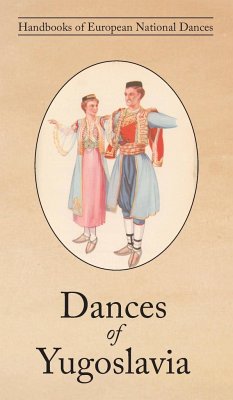The great variety of folk dances found in Yugoslavia is the result of various factors, the peoples having lived under many different and social conditions. South and East were mainly exposed to Turkish influences, West and North to those of the Austro-Hungarian Empire, while Dalmatia and the Adriatic Islands were open to prolonged Italian influence. In this book, illustrated by four colour plates, are detailed descriptions of four typical peasant dances, with the correct dance steps and music, from four different areas: Zupcanka from Serbia, Zetsko Kolo from Montengro, Tri Mlinara from Croatia, and Laka Lisa from Macedonia. The authors, two sisters from Serbia, devoted much of their lives to collecting and analyzing folk dances from South-Eastern Europe. Between 1934 and 1964 they published eight volumes and several monographs of dance research.
Bitte wählen Sie Ihr Anliegen aus.
Rechnungen
Retourenschein anfordern
Bestellstatus
Storno








